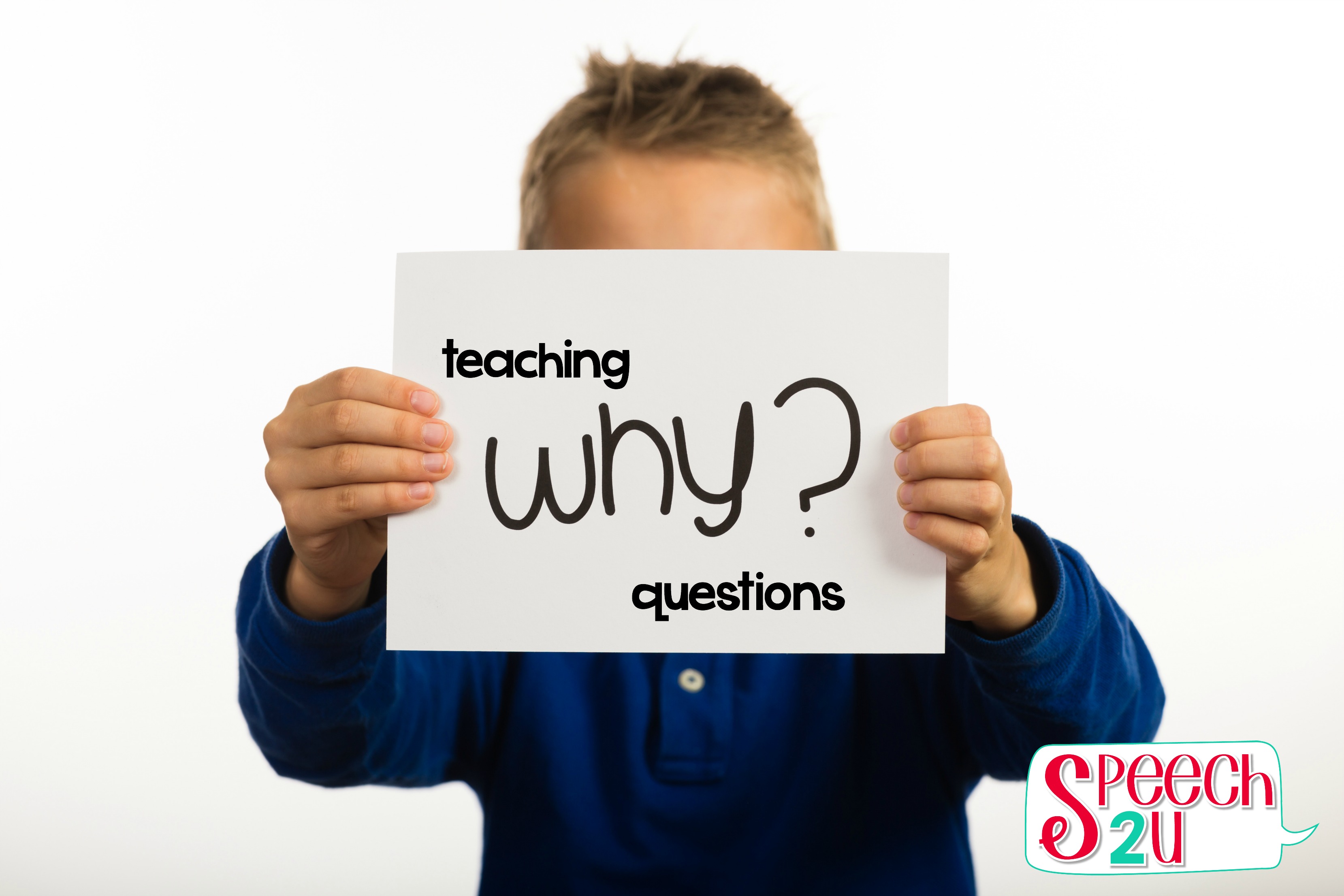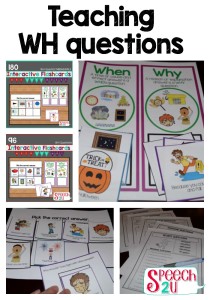Last month, I shared some of my ideas for answering WHO, WHAT and WHERE questions. This month, I’m tackling WHEN and WHY questions. WHY questions move from providing factual information to incorporating reasoning and early problem solving skills. We need to think about the situation asked in the question and then determine a reason WHY we completed an action.

To make this correlation, I start by having children fill in the end of a sentence. (Ex. Why do we brush our teeth? Because they are dirty or SO we don’t get cavities.) You can write out a list of ten targets and practice these. As students get better at filling in the blank, you can switch to alternating between a fill in the blank activity and the question. For example:
- We go to sleep because we feel (tired).
- We go to sleep (because we feel tired).
- Why do we go to sleep? (because we feel tired).
When we think of why questions, I think we usually think of answering them using “because.” But I’ve found that it’s more likely that you would use “to” or “so.” I work on each individually and then combine them to see if they can generalize.
Answering WHY questions with “because”:
We answer WHY questions with “because” to show the reason or cause of an action. (Ex. Why are you crying? Because you are sad.”) Here are some more examples:
- Why do you put on a jacket? Because it is cold out.
- Why did he cheat on the test? Because he wanted to get a good grade.
- Why did you push your sister? Because she was bothering me.
Answering WHY questions with “so”:
We answer WHY questions with “so” to show the results of an action. (Ex. Why do you fill up your gas tank? So you don’t run out of gas.) Here are some more examples:
- Why do you comb your hair? So it will look nice.
- Why do you wear headphones? So you can hear your music.
- Why did the boy have a cast? So his bones could heal.
Answering WHY questions with “to”:
We answer WHY questions with “to” to show the results or cause of an action. (Ex. Why do we lock up cleaning supplies? To protect babies.) Here are some more examples:
- Why do you go to school? To learn.
- Why do you need money? To buy things.
- Why do you go to the doctor? To stay healthy.
WHY Question Activities
- Short Videos or Movie Trailers: Short videos, wordless movies or TV show snippets can be a fun stimulus material in therapy. The Simon the Cat Videos can be really fun to work on WHY questions. Why did the man scream, because Simon flushed the toilet while he was taking a shower. Or Why is Scooby Doo hiding? Because he is afraid of the monster. Check out my Pinterest board for some of my favorite social videos.
- Chutes and Ladders has some fun cause and effect visuals on their game board. You could work on WHY you are sliding down or climbing up the ladder. (ex. because you broke a vase or because you helped someone cross the street.) Another game that fits into the cause and effect model is Don’t Wake Daddy. The board has different pictures of loud events/objects. I ask, “Why did Daddy wake up?” My clients have to use a sentence based on the picture on which they landed. For example, Why did daddy wake up? Because the kids were making too much noise.
- Clue Junior can be a fun game to work on negative WHY questions. For example, Why didn’t you pick ? Because I saw them in the kitchen and knew they could do it.
I also encourage the families that I work with to model WHY/BECAUSE answers throughout their daily life For example, I am going to go mow the lawn BECAUSE the grass is too long. It’s also good to keep answering WHY questions your children might have vs. getting impatient. Says the woman who constantly finds herself saying, “because I said so” and “because I’m the mom, that’s why.” Haha. I remember when I thought I would always answer every questions thoughtfully.
Interested in a more systematic product for teaching when and why questions? You may want to check out my When and WHY product on TPT.
TO DO: Write up a list of 1o WHY questions you can use in therapy.



I really appreciate these strategies. I didn’t see last month’s column/post for other WH questions, so will have to look for it.
Great suggestions for activities to use when tackling those “why” questions!